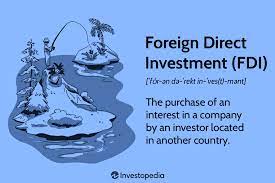Image Credit: .investopedia.com
Based on data from the Nigerian Bureau of Statistics (NBS), total capital imported into the country declined by 20.47% to US$5.33bn in 2022 from US$6.70bn in 2021. In Q4 2022, capital imported declined by 51.51% to US$1.06bn from US$2.19bn in Q4 2021. In comparison to Q3 2022, capital imported fell by 8.53% from US$1.15bn in Q3 2022. Capital importation is the
total foreign inflow a country receives, and it is divided into three main categories: Foreign Direct Investments (FDI), Foreign Portfolio Investments (FPI), and Foreign Other Investments (FOI). The largest proportion of capital imported in Q4 2022 was through other investments which include trade credits, loans, and currency deposits, accounting for 65.17% (US$691.23m) of total capital imported in Q4 2022. This was followed by portfolio investments with 26.89% (US$285.26m) and foreign direct investments with 7.94% (US$84.23m).
Most of the foreign capital that flowed into Nigeria in Q4 2022 came from the United Kingdom with US$455.24m, accounting for 42.92%, followed by the Republic of South Africa and the United Arab Emirates valued at US$119.31m (11.25%) and US$116.82 (11.01%) respectively. In 2022, 27 states received no foreign investments while Lagos and Federal Capital Territory (FCT) attracted the highestforeign investments (US$3.61bn and US$1.63bn) respectively. Lagos attracted 67.82% of the total investments that came into Nigeria in 2022.
Foreign investment inflows into Nigeria have been declining in recent years. Factors like the scarcity of forex amidst unclear FX policies, the lingering effects of two recessions, interest rate normalization in developed economies, inflationary pressures, security concerns, and structural challenges have continued to hamper the inflow of foreign investments into the country. Tensions around the 2023 general elections also had a negative impact on capital inflows in 2022. Looking ahead, we note that more needs to be done in addressing pertinent issues facing the economy to brighten the country’s chances of attracting capital inflows. The country’s foreign exchange policy is one of those key issues.
Click here to read full PDF copy of report
CSL Research













